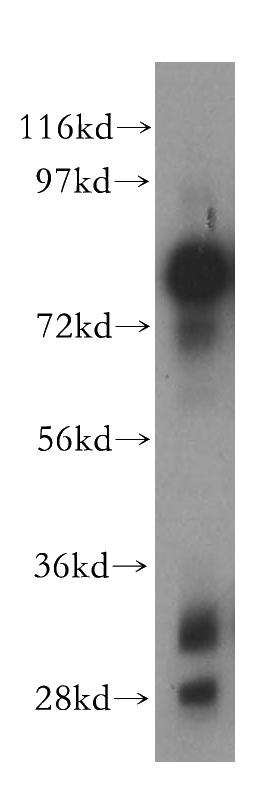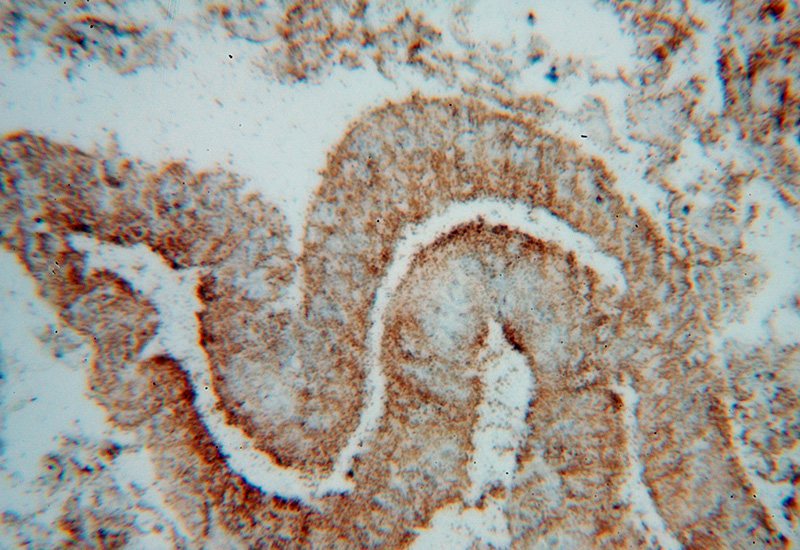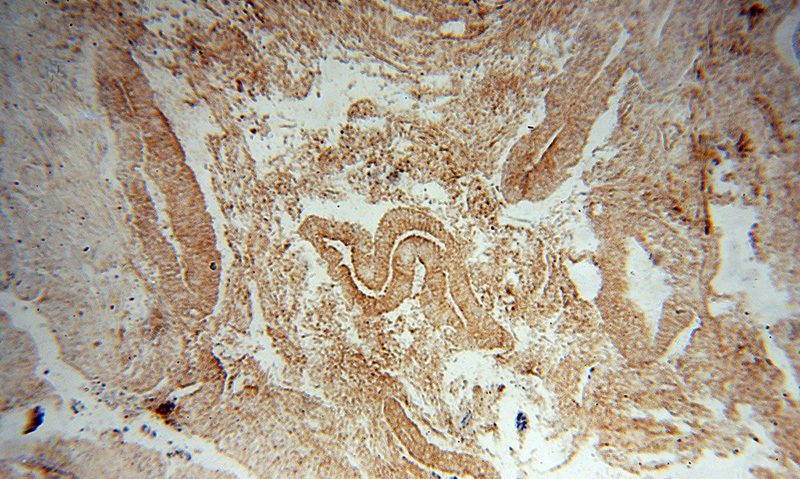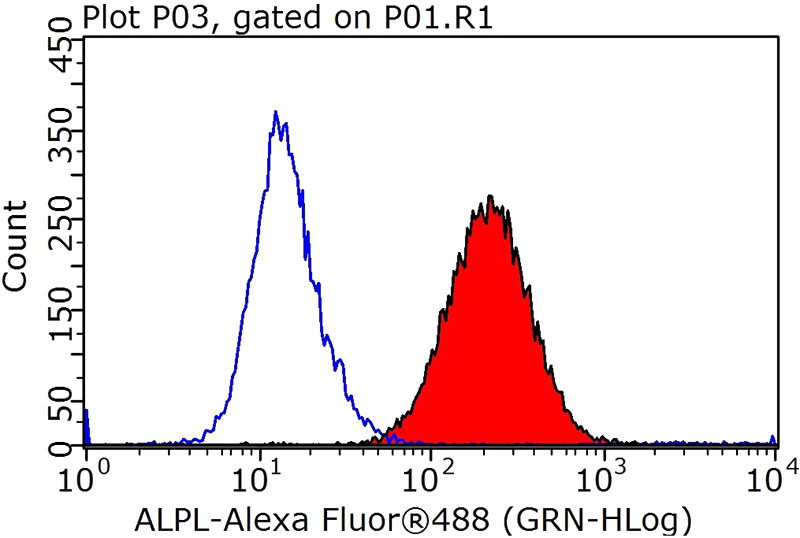-
Product Name
ALPL antibody
- Documents
-
Description
ALPL Rabbit Polyclonal antibody. Positive FC detected in HeLa cells. Positive IHC detected in human colon cancer tissue, human liver cancer tissue, human lung cancer tissue. Positive WB detected in HEK-293 cells, HeLa cells, mouse kidney tissue. Observed molecular weight by Western-blot: 80 kDa
-
Tested applications
ELISA, WB, IHC, FC
-
Species reactivity
Human,Mouse,Rat; other species not tested.
-
Alternative names
Alkaline phosphatase antibody; Alkaline phosphatase liver/bone/kidney isozyme antibody; Alkaline phosphatase tissue nonspecific isozyme antibody; ALPL antibody; BLAP antibody; Bone Alkaline Phosphatase antibody; NBAP antibody
-
Isotype
Rabbit IgG
-
Preparation
This antibody was obtained by immunization of ALPL recombinant protein (Accession Number: NM_000478). Purification method: Antigen affinity purified.
-
Clonality
Polyclonal
-
Formulation
PBS with 0.1% sodium azide and 50% glycerol pH 7.3.
-
Storage instructions
Store at -20℃. DO NOT ALIQUOT
-
Applications
Recommended Dilution:
WB: 1:500-1:5000
IHC: 1:20-1:200
-
Validations

HEK-293 cells were subjected to SDS PAGE followed by western blot with Catalog No:107881(ALPL antibody) at dilution of 1:1000

Immunohistochemical of paraffin-embedded human colon cancer using Catalog No:107881(ALPL antibody) at dilution of 1:100 (under 40x lens)

Immunohistochemical of paraffin-embedded human colon cancer using Catalog No:107881(ALPL antibody) at dilution of 1:100 (under 10x lens)

1X10^6 HeLa cells were stained with 0.2ug ALPL antibody (Catalog No:107881, red) and control antibody (blue). Fixed with 90% MeOH blocked with 3% BSA (30 min). Alexa Fluor 488-congugated AffiniPure Goat Anti-Rabbit IgG(H+L) with dilution 1:1000.
-
Background
There are at least four distinct but related alkaline phosphatases: intestinal, placental, placental-like, and liver/bone/kidney (tissue non-specific). The product of this gene is a membrane bound glycosylated enzyme that is not expressed in any particular tissue and is, therefore, referred to as the tissue-nonspecific form of the enzyme. ALPL(Alkaline phosphatase, tissue-nonspecific isozyme) is also named as AP-TNAP, TNSALP and belongs to the alkaline phosphatase family. It can exsit as a homodimer with the molecular weight of 140 kDa(PMID:18724009). ALPL was synthesized as a 66-kDa endo-b-N-acetylglucos-aminidase H (Endo H)-sensitive form, and processed to an 80-kDa mature form, which is anchored to the plasma membrane via glycosylphosphatidylinositol (GPI)(PMID:10839996).This antibody can bind the four mentioned alkaline phosphatases.
-
References
- Kim TH, Lee JY, Baek JA. Constitutive stabilization of ß-catenin in the dental mesenchyme leads to excessive dentin and cementum formation. Biochemical and biophysical research communications. 412(4):549-55. 2011.
- Sun P, Wang J, Zheng Y, Fan Y, Gu Z. BMP2/7 heterodimer is a stronger inducer of bone regeneration in peri-implant bone defects model than BMP2 or BMP7 homodimer. Dental materials journal. 31(2):239-48. 2012.
- Kim TH, Bae CH, Jang EH. Col1a1-cre mediated activation of β-catenin leads to aberrant dento-alveolar complex formation. Anatomy & cell biology. 45(3):193-202. 2012.
- Kim TH, Bae CH, Lee JC. β-catenin is required in odontoblasts for tooth root formation. Journal of dental research. 92(3):215-21. 2013.
- Bae CH, Kim TH, Chu JY, Cho ES. New population of odontoblasts responsible for tooth root formation. Gene expression patterns : GEP. 13(5-6):197-202. 2013.
- Wang G, Li J, Zhang W. Magnesium ion implantation on a micro/nanostructured titanium surface promotes its bioactivity and osteogenic differentiation function. International journal of nanomedicine. 9:2387-98. 2014.
- Gu GJ, Chen T, Zhou HM, Sun KX, Li J. Role of Wnt/β-catenin signaling pathway in the mechanism of calcification of aortic valve. Journal of Huazhong University of Science and Technology. Medical sciences = Hua zhong ke ji da xue xue bao. Yi xue Ying De wen ban = Huazhong keji daxue xuebao. Yixue Yingdewen ban. 34(1):33-6. 2014.
- Kim TH, Bae CH, Lee JC. Osterix regulates tooth root formation in a site-specific manner. Journal of dental research. 94(3):430-8. 2015.
Related Products / Services
Please note: All products are "FOR RESEARCH USE ONLY AND ARE NOT INTENDED FOR DIAGNOSTIC OR THERAPEUTIC USE"
